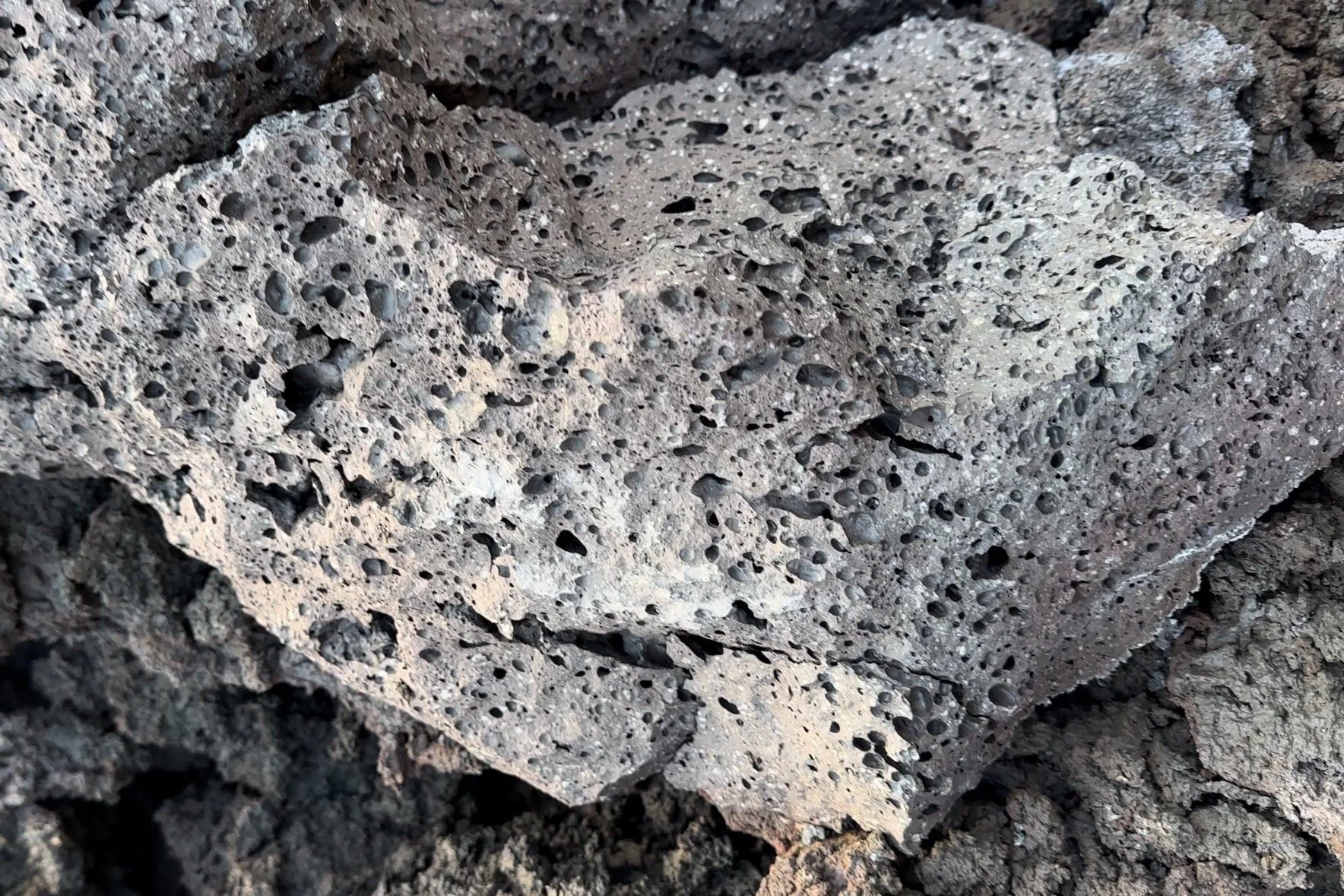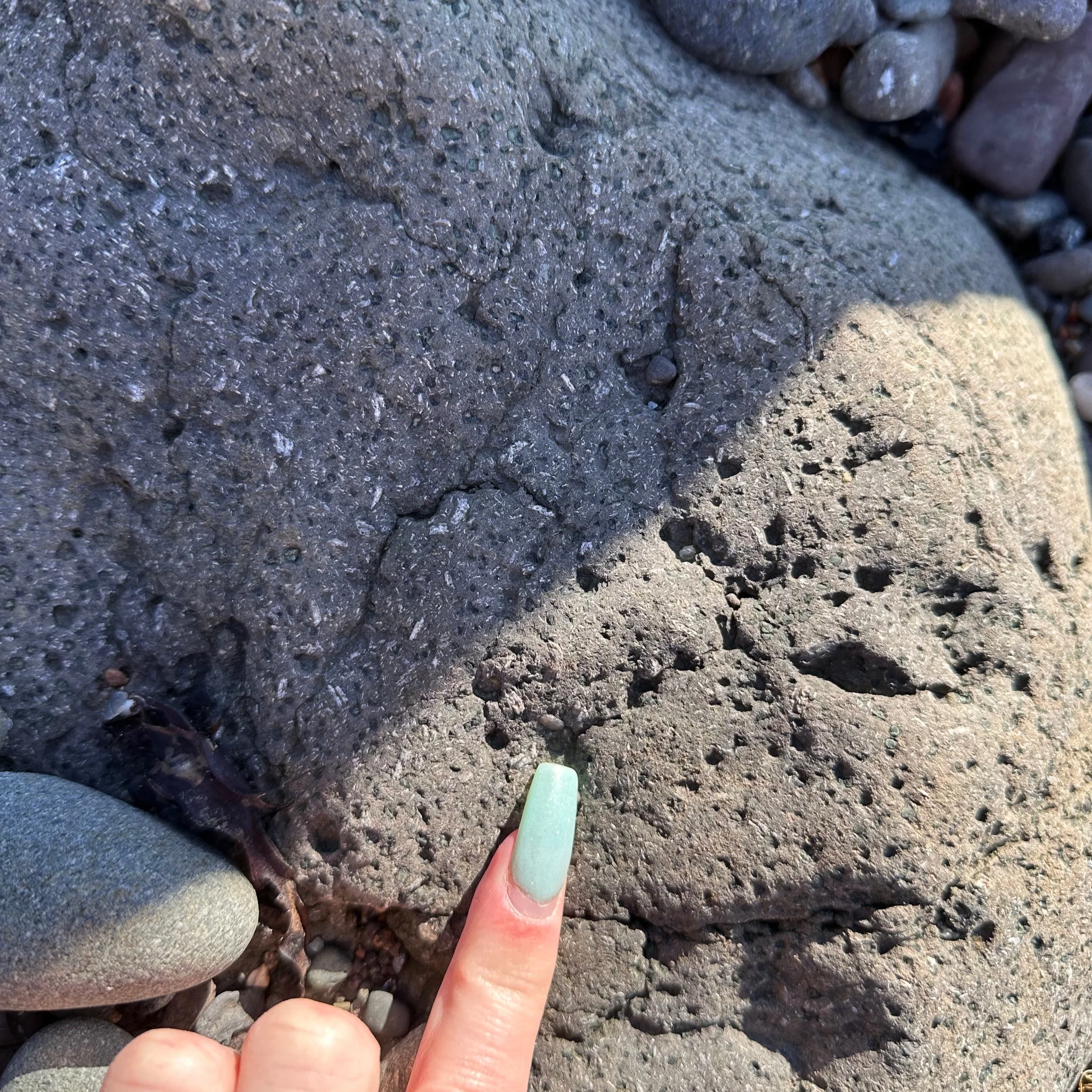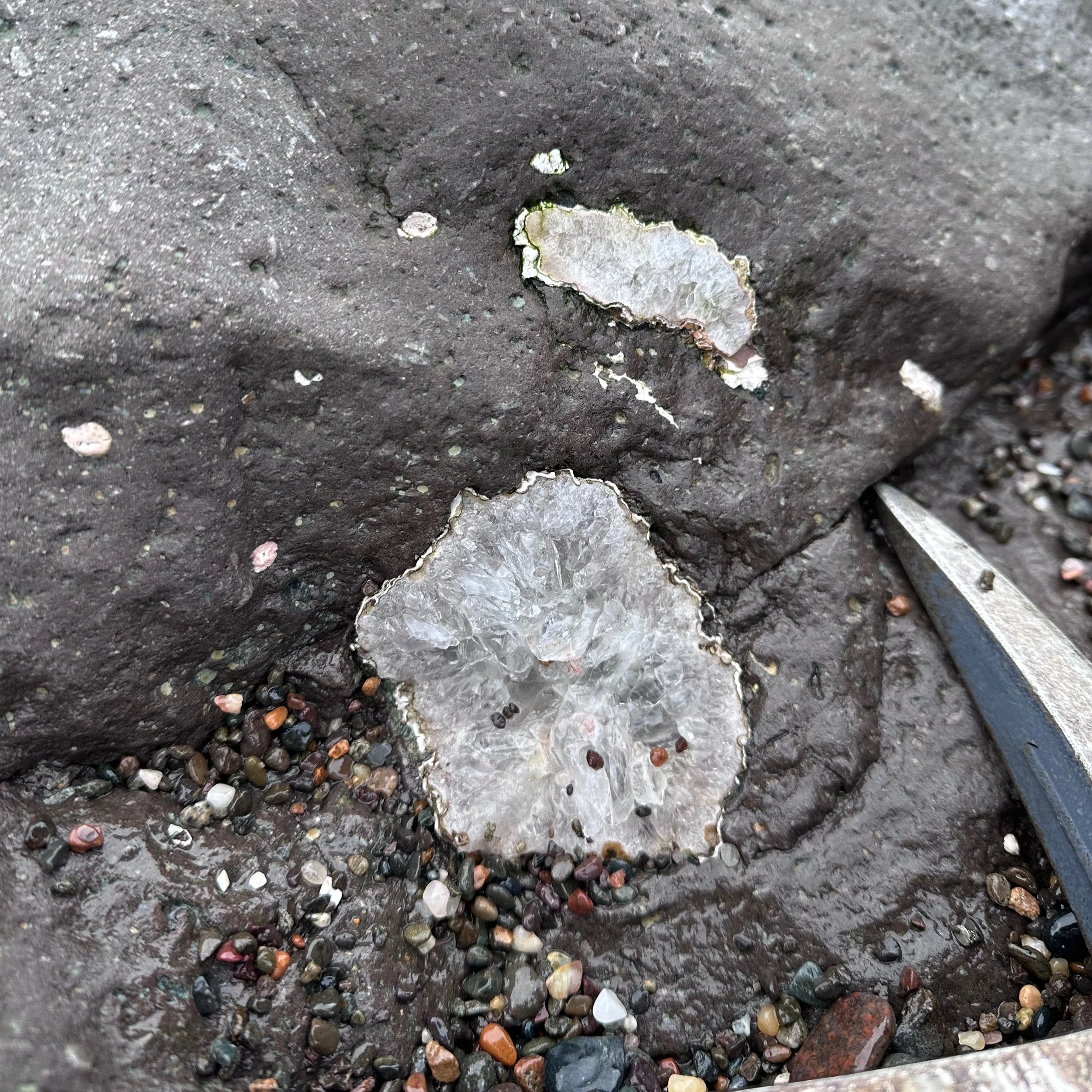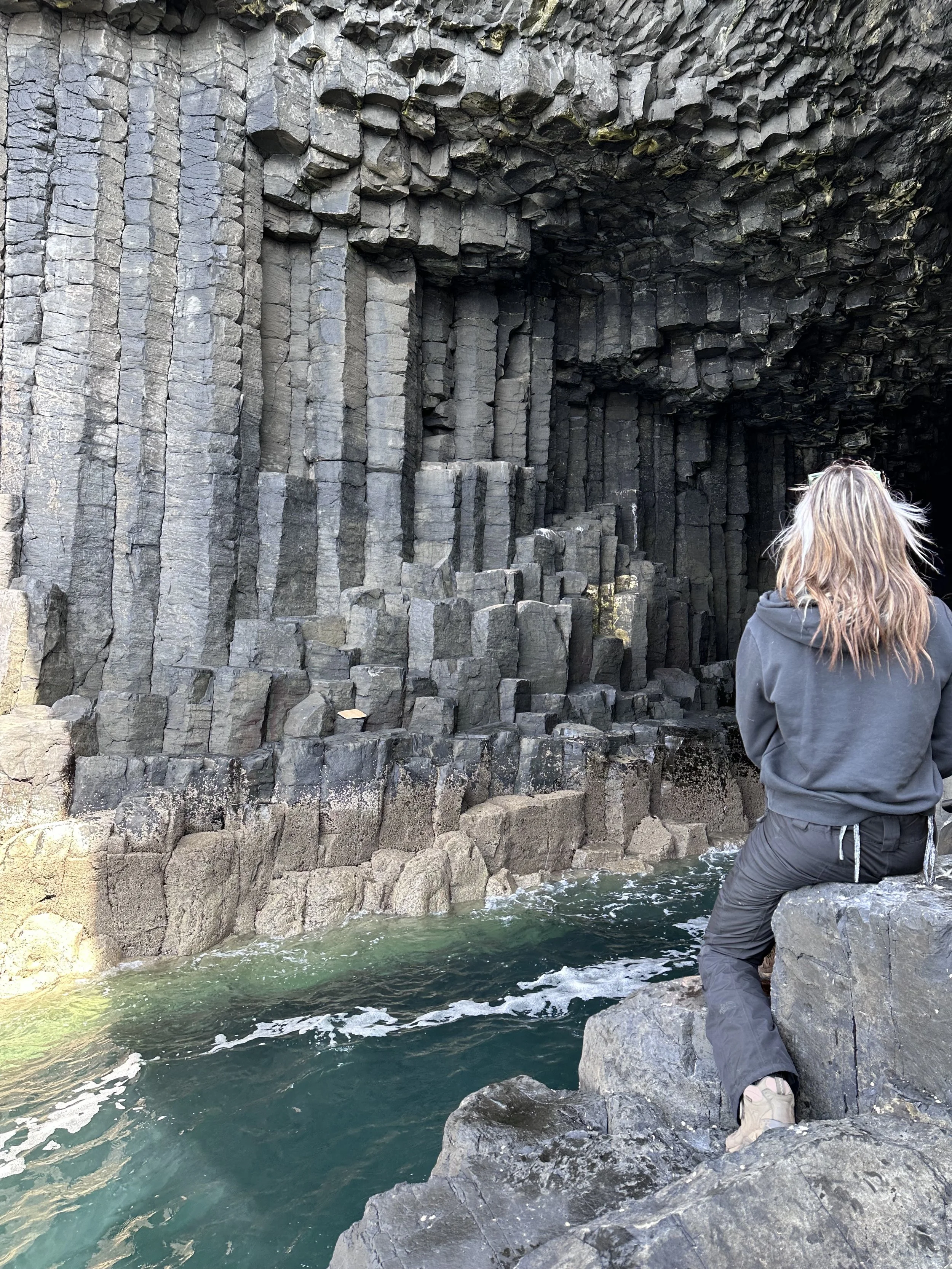Basalt
First of all… What’s an Igneous Rock?
Igneous rocks are those that are volcanic derived from molten magma or lava. Its magma when its in the crust, then lava when erupted at the surface. They are split into two simple categories which depend on its location of formation:
Extrusive igneous rocks - rocks that form by the extrusion of lava on to the surface of the crust (lava) - Fine grained - quick cooling and crystallisation - Basalt
Intrusive igneous rocks - rocks that form by magma intruding into the crust (Plutons, dykes, sills, laccoliths etc) - coarse grained and crystalline - slow cooling and crystallisation - Gabbro
There are various different compositions of igneous rocks, but today we will talk about Basalt, the first of those ones to form from a partial melt of the mantle.
What is Basalt?
Basalt is a basic, mafic igneous rock that forms from molten magma or lava. It’s a partial melt of the mantle which sits below the crust and forms usually when there’s volcanism associated with a divergent plate boundary (where two plates move away from each other) or a mantle plume.
Fig 1: Basaltic Lava Flow, Iceland, July 2023
Geologically speaking, basalt is rich in iron and magnesium (mafic) and poor in silica, giving it a dark, often black/grey or greenish hue. Basalt is fine grained (meaning its difficult to see the crystals with the naked eye) and forms by ‘quick’ cooling of magma/lava when it is either still in the crust, very close to the surface as an intrusive igneous rock (sill or dyke) or at the surface as a lava - an extrusive igneous rock. It’s made up of minerals such as pyroxene, olivine, plagioclase feldspar and sometimes minimal amounts of biotite and amphibole.
Fig 2: Composition of Magmas/lavas based on silica content. Source: Karla Panchuk (2018) CC BY-NC-SA 4.0, modified after Steven Earle (2015) CC BY 4.0 view source and others, with photos by R. Weller/Cochise College.
Fig 3: Peridotite (mantle) on the left, Basalt (lava) on the right.
Divergent plate boundary
When two plates move away from each other, you get the formation of basaltic magma. This is what most of the oceanic crust is made up off across the world. The magma is hot, and at these boundaries, you usually get a partial melt of the mantle which is basaltic in composition. It makes its way up through the crust because its buoyant and it wants to get to the surface but sometimes it gets stuck in the crust and forms as Intrusive igneous rocks such as a pluton (magma chamber), a dyke or a sill (see fig 4). When it does eventually reach the surface, it comes out the ground extremely hot and molten at 1200°C as an extrusive igneous rock known as basalt. Because it is cold at the surface, the lava crystallises very quickly and forms ridiculously small crystals giving basalt that fine grained texture, sometimes a glassy texture in appearance. Basalt usually forms subtile gentle Hawaiian volcanic eruptions rather than explosive ones - unless it is mixed with minimal amounts of water and ice.
Fig 4: Cross section of different igneous intrusions that can form.
Vesicular Basalt
Basaltic magma/lava contains a lot of volatiles (gases) and when this erupts at the surface, these gases are realised – forming what’s knows as ‘vesicles’ – small cavities or air bubbles left in the rock once it crystallises.
Fig 5: Vesicular Basalt, Iceland, September 2022. Notice there are many vesicles in this crystallised basalt and we can also see a porphyritic texture with some beautiful plagioclase feldspar phenocrysts.
Porphyritic Basalt
Porphyritic is a texture that can be associated with most igneous rocks – it’s basically when the rock contains minerals that are much larger than the ground mass referred to as phenocrysts. These phenocrysts form from a 2nd stage of cooling associated with the magma making its way through the crust and cooling out before everything else - therefore they have time to grow meaning they are a lot bigger than the groundmass.
Fig 6: Porphyritic texture, Carrick Volcanic Formation, Dunure, Scotland.
Amygdaloidal Basalt
Amygdale’s form when you have hot hydrothermal fluids run through the rock that precipitate out minerals that fill up the vesicles forming amygdale’s, geodes or in some cases agates. These can be various different minerals including plagioclase feldspar, quartz, chlorite, calcite etc.
Fig 7: Amygdoidal Basalt, Isle of Skye, Scotland.
Fig 8: Amygdaloidal Basalt can also contain geodes and/or Agates. Dunure Beach, Scotland.
Columnar basalt
Basalt can form striking basaltic columns that are usually hexagonal pillars - They can be seen as being ‘too perfect’ to form naturally in nature. These form by the cooling and contraction of the basaltic lava, forming the columns that we can see today.
Fig 9: Basaltic Columns, Isle of Staffa, Scotland. Erupted as basaltic lava 60 million years ago associated with the opening of the Atlantic Ocean
Basalt isn’t just a rock, it’s the planets most abundant crustal companion.
Watch the YouTube video on Basalt - https://www.youtube.com/watch?v=qrmB1Wa7XqA









